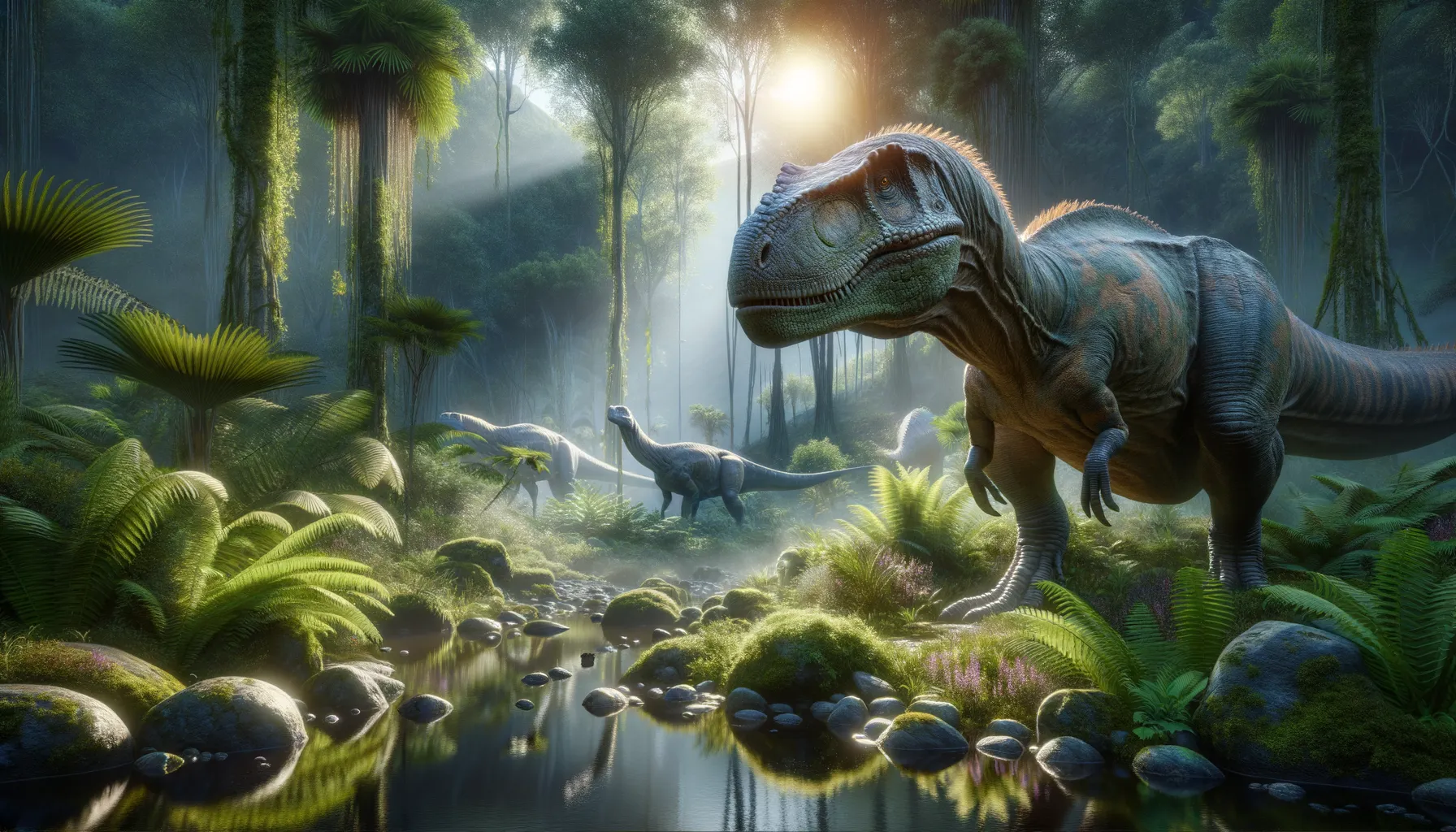
Zalmoxes
Herbivore thriving in the Cretaceous shadows.
Period
Cretaceous
Length
Roughly 2.5 to 3 meters long.
Height
About 0.6 to 1 meter at the hips.
Weight
Approximately 100 to 150 kg.
Zalmoxes was a herbivorous dinosaur that roamed the earth during the late Cretaceous period. Its fossils were first discovered in Romania, and it belonged to a group known as the Rhabdodontidae. Known for its stocky build and plant-eating lifestyle, Zalmoxes was a relatively small dinosaur that thrived in its lush habitat. Its discovery has provided valuable insights into the diversity and evolution of European dinosaurs during the Cretaceous.
Diet
Zalmoxes was primarily a herbivore, feeding on a variety of plant materials available in its environment. It likely consumed leaves, fruit, and possibly seeds or roots to maintain its nutrition.
Hunting
As an herbivore, Zalmoxes did not hunt other animals. Instead, it foraged for plant materials, using its beak-like mouth to clip vegetation efficiently.
Environmental challenges
During the Cretaceous period, Zalmoxes faced environmental challenges like shifting climates and the rise of flowering plants. These changes required it to adapt its diet to new plant varieties, ensuring survival amidst evolving ecosystems. Additionally, Zalmoxes had to avoid predators, which were common during the time.
Speed
Moderate pace typical of herbivorous dinosaurs.
Lifespan
Estimated around 20-30 years.
First discovery
Discovered in Romania in the late 19th century.
Fun Facts
- Zalmoxes was a small, plant-eating dinosaur that lived during the Late Cretaceous period.
- It was primarily found in what is now Romania, known for its rich fossil sites.
- Zalmoxes had strong hind legs and a long tail, helping it balance and move quickly.
- Despite its small size, Zalmoxes had a beak-like mouth ideal for cropping plants.
- It belonged to a group of dinosaurs called ornithopods, which were generally known to be good runners.
- The name Zalmoxes comes from a god of the ancient Dacians, the people who lived in the region where its fossils were discovered.
- Zalmoxes coexisted with many other types of dinosaurs, showing a rich variety in its ecosystem.
Growth and Development
Zalmoxes experienced growth spurts during its early years, with rapid increases in size ensuring early survival. As it matured, its growth rate would likely have slowed, allowing energy to be allocated to reproduction and social interactions. Growth rings in its bones suggest seasonal growth patterns.
Habitat
Zalmoxes inhabited forested environments that provided ample vegetation for its diet. The area that is now Romania was then part of an island or archipelago, offering a unique ecological setting. Its habitat would have had a humid climate, promoting lush flora and creating diverse ecosystems.
Interaction with other species
Zalmoxes likely encountered various species, from herbivorous contemporaries to carnivorous predators. Its interactions would have involved competition for food resources and establishing territories. Defensive behavior and group living could have been strategies against larger predators.
Natural lifespan
Zalmoxes had a natural lifespan of around 20-30 years.
Reproduction
Zalmoxes reproduced by laying eggs, as typical of many dinosaurs. Nesting habits could have involved communal nesting sites to help protect offspring from predators. Parental care was likely limited, with hatchlings being relatively self-sufficient.
Social behaviour
Zalmoxes may have exhibited social behaviors, potentially forming small groups to increase safety against predators. Social interactions would have included finding mates and possibly sharing foraging territories. Communication might have been through vocalizations or visual displays.
Fossil locations
Fossils of Zalmoxes have primarily been found in Romania, particularly within the Hațeg Basin. This area has yielded significant paleontological findings, contributing to our understanding of European dinosaurs. Further remains may also be found in regions that were part of ancient island ecosystems.
